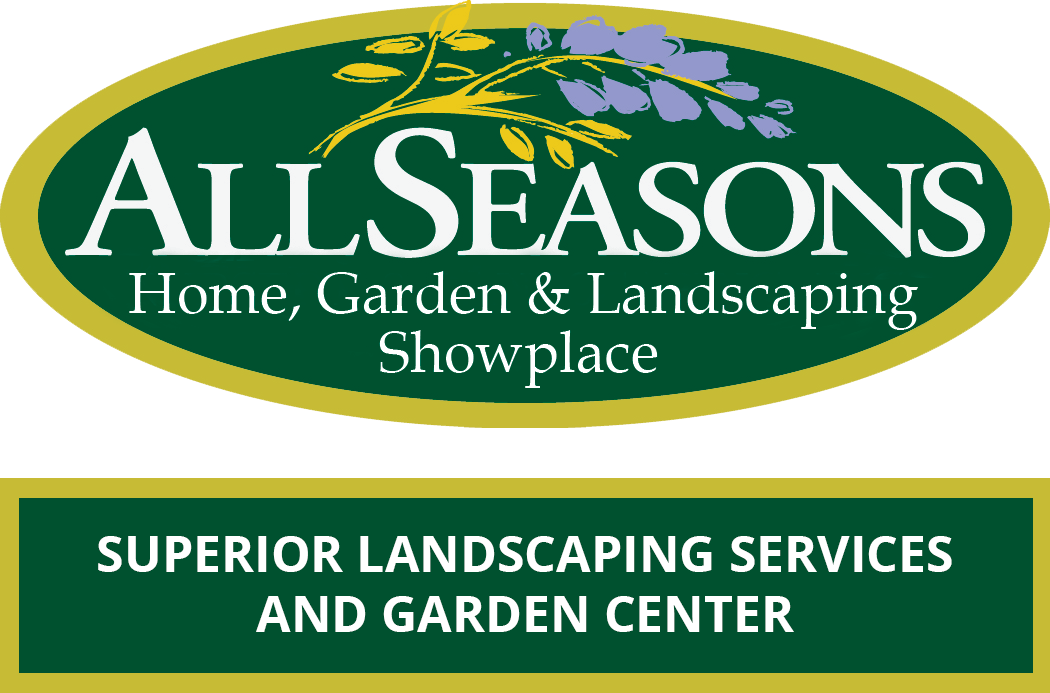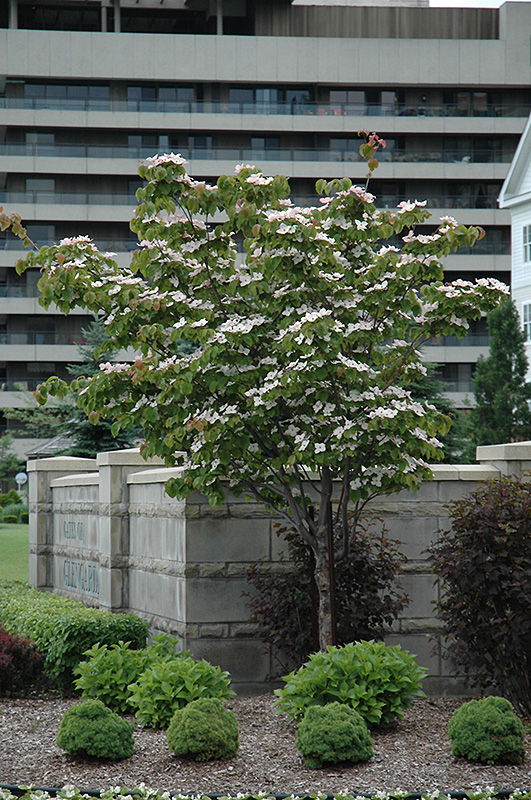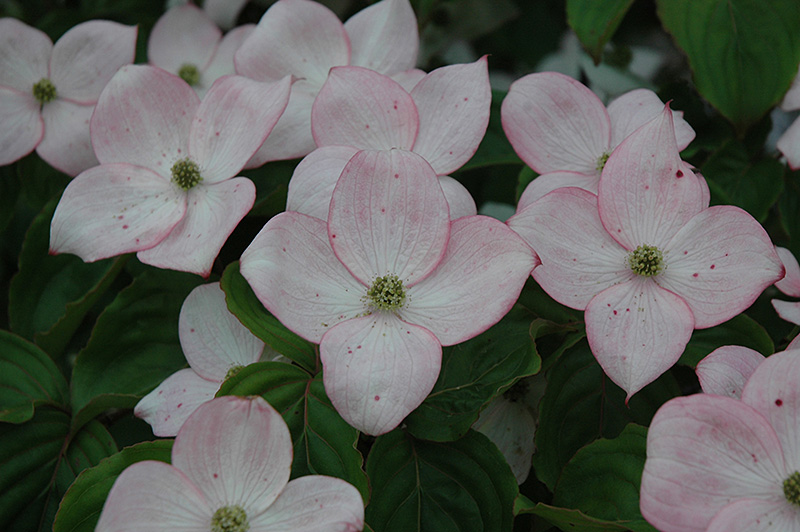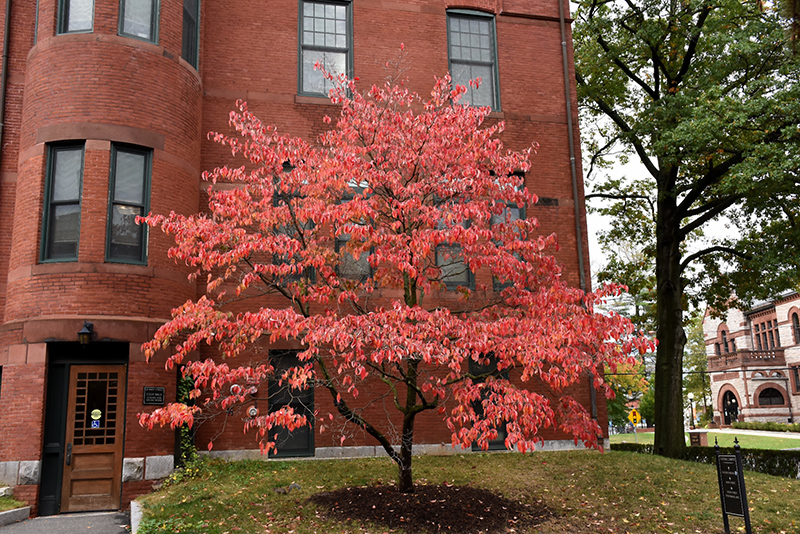Height: 30 feet Spread: 35 feet
Sunlight:
Hardiness Zone: 6 Description: Possibly the ultimate small specimen tree, famous for its large yet delicate white blooms in spring and excellent wide-spreading form; extremely fussy, requires rich, well-drained acidic soil and adequate precipitation, best with some shelter Ornamental Features Flowering Dogwood features showy clusters of white flowers with white bracts held atop the branches in mid spring. It has forest green deciduous foliage which emerges burgundy in spring. The pointy leaves turn an outstanding brick red in the fall. It produces red berries from early to late fall. The warty gray bark adds an interesting dimension to the landscape. Landscape Attributes Flowering Dogwood is a multi-stemmed deciduous tree with a stunning habit of growth which features almost oriental horizontally-tiered branches. Its average texture blends into the landscape, but can be balanced by one or two finer or coarser trees or shrubs for an effective composition. This is a relatively low maintenance tree, and should only be pruned after flowering to avoid removing any of the current season's flowers. It is a good choice for attracting birds to your yard. Gardeners should be aware of the following characteristic(s) that may warrant special consideration; Flowering Dogwood is recommended for the following landscape applications; Planting & Growing Flowering Dogwood will grow to be about 30 feet tall at maturity, with a spread of 35 feet. It has a low canopy with a typical clearance of 4 feet from the ground, and should not be planted underneath power lines. It grows at a slow rate, and under ideal conditions can be expected to live for approximately 30 years. This tree does best in a location that gets morning sunlight but is shaded from the hot afternoon sun, although it will also grow in partial shade. Keep it away from hot, dry locations that receive direct afternoon sun or which get reflected sunlight, such as against the south side of a white wall. It requires an evenly moist well-drained soil for optimal growth, but will die in standing water. It may require supplemental watering during periods of drought or extended heat. It is very fussy about its soil conditions and must have rich, acidic soils to ensure success, and is subject to chlorosis (yellowing) of the foliage in alkaline soils. It is quite intolerant of urban pollution, therefore inner city or urban streetside plantings are best avoided, and will benefit from being planted in a relatively sheltered location. Consider applying a thick mulch around the root zone in winter to protect it in exposed locations or colder microclimates. This species is native to parts of North America. Disclaimer - This Plant Finder tool is an online resource representing many of the varieties that we carry over the course of the season, and is intended for informational purposes only. Inventory varies seasonally, so we cannot guarantee that every plant will be in stock at all times - please contact the store directly for current availability. It does not include our entire selection of plants, so be sure to visit our store to see varieties that may not be represented on this list.All Seasons Plant Finder
![]()
![]()
![]()
![]()
![]()
![]()
![]()
![]()
![]()
![]()
![]()
![]()
![]()
![]()
NetPS Page
Characteristics
Applications
Features & Attributes
Browse Our Website
Our Services
Contact Information
Phone: (337) 264-1418
Email: info@buyallseasons.com
Location: 2974 Johnston St Lafayette, LA 70503
Business Hours:
Monday-Saturday 8am-6pm •
Sunday 9am-5pm






